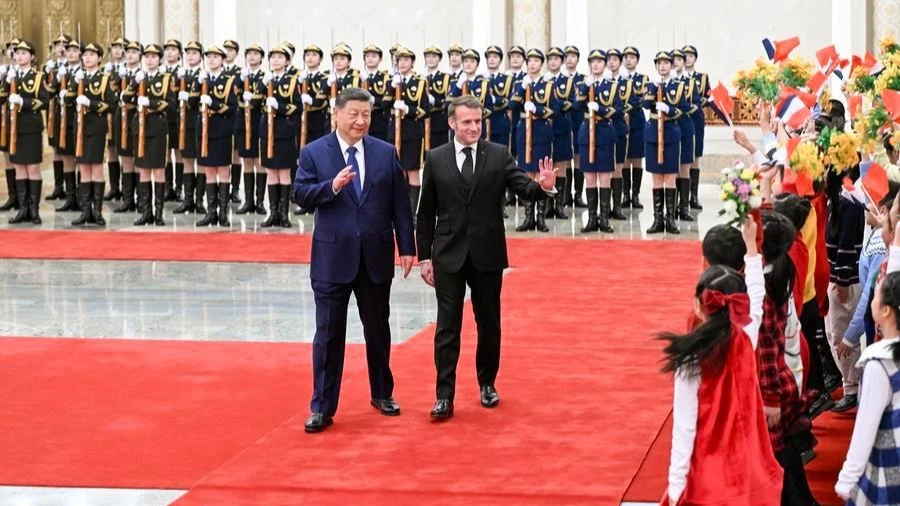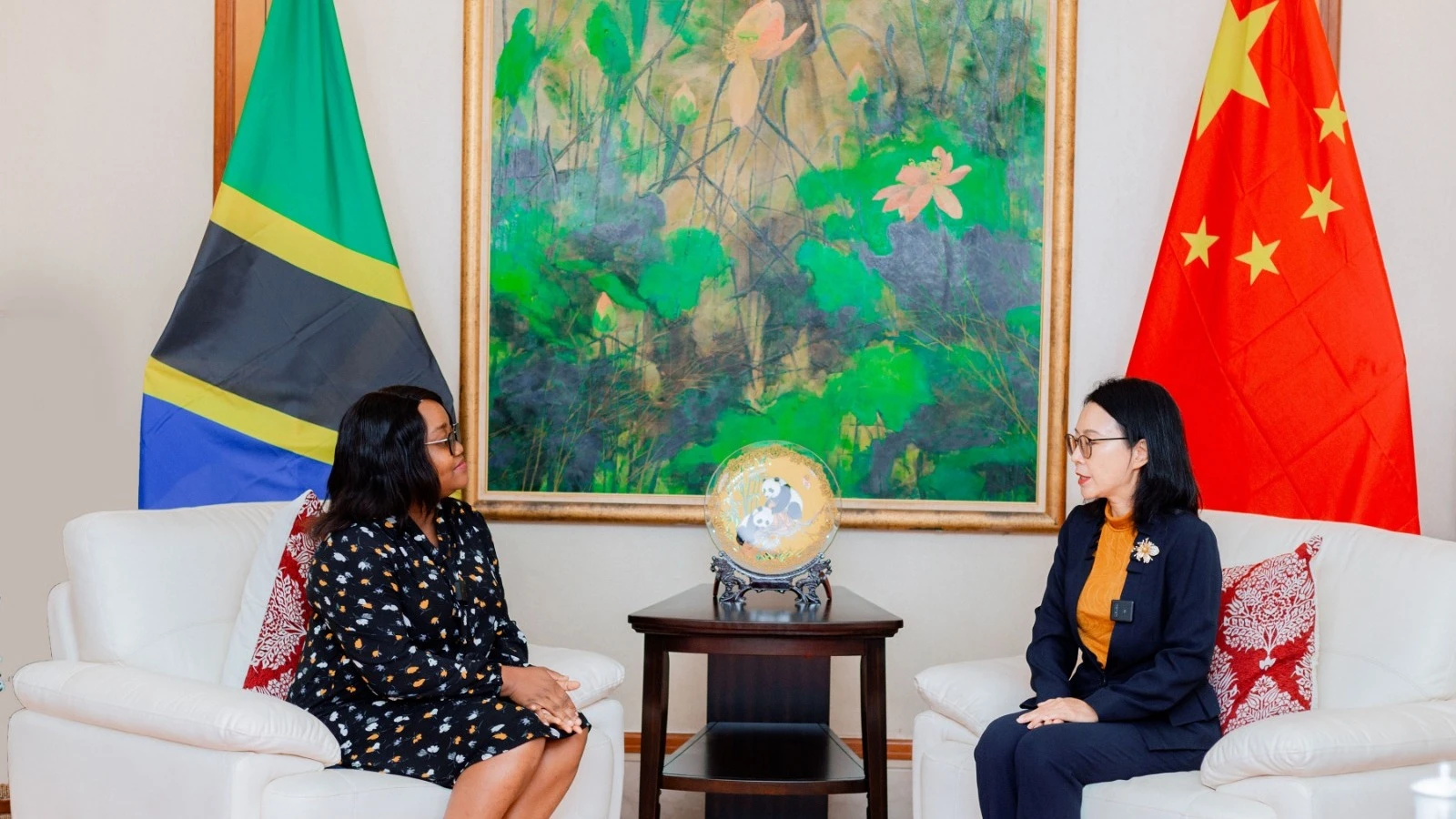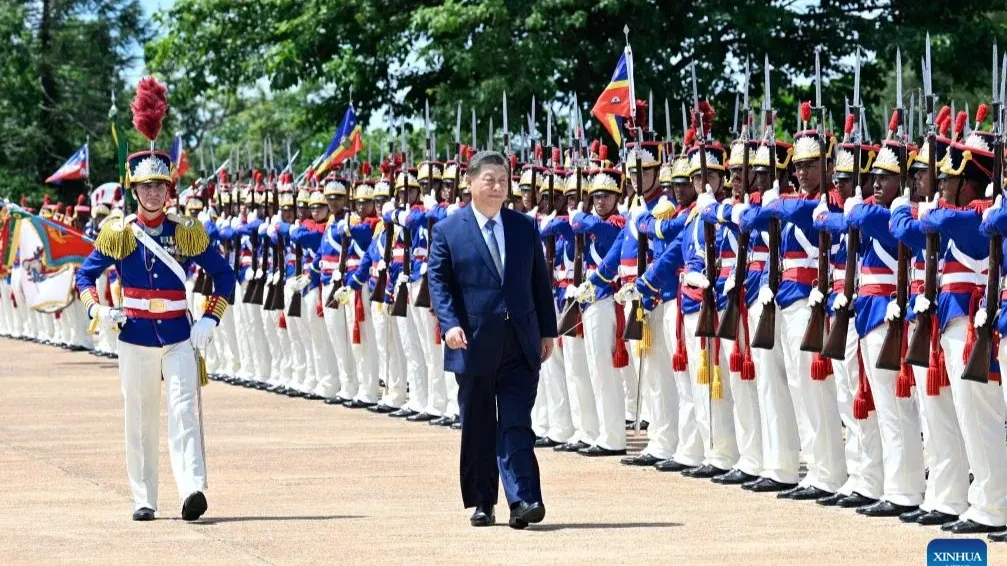China's National Day holiday draws global tourists

On Oct 1, the first day of China's eight-day National Day holiday, 70-year-old Nikolayev crossed the border into Manzhouli, a border city in North China's Inner Mongolia autonomous region.
"This is my birthday gift to myself," said the Russian traveler, beaming as he waved his passport freshly stamped with an entry seal.
Fascinated by China since childhood, Nikolayev had long dreamed of visiting the neighboring country. When he learned about China's latest visa-free travel policyfor Russian citizens last month, he decided to celebrate his 70th birthday in China, arriving just in time for China's National Day.
"I wanted to see my neighbor with my own eyes," he said. "The visa-free policy made it the perfect moment."
According to China's National Immigration Administration (NIA), tourists of 76 countries now enjoy unilateral or mutual visa-free entry, with transit exemptions expanded to 55 countries. Citizens of 55 countries, including the United States and Canada, can visit China visa-free for up to 10 days in transit, before traveling to a third destination.
Earlier this year, Southwest China's Chongqing municipality captured global attention when US influencer IShowSpeed livestreamed from the city to over 10 million viewers, exclaiming, "This city is actually a cyber city!"
According to official data, from January to August this year, Chongqing saw an 82.48 percent year-on-year increase in inbound tourist arrivals.
During this holiday, the city continued to draw foreign visitors, among them was Antonio from Spain, who visited Chongqing during this National Day holiday, drawn especially to the striking sight of a monorail slicing through apartment blocks, a feature he eagerly photographed.
"I'm fascinated by how the city seems to rise in layers," he said, glancing at the skyline where towers cling to steep hillsides. "When the lights come on at night, it feels almost futuristic."
While Chongqing amazed people with its modern skyscrapers, North China's Shanxi province presented a journey through centuries-old wooden pagodas and temples.
Renowned for its ancient structures with over 28,000 preserved historical buildings, the province's popularity has surged thanks to the phenomenal video game Black Myth: Wukong, inspired by the classic Chinese novel Journey to the West.
In Taiyuan city, Spanish visitor Sergio, a fan of ancient architecture, was greeted with an unexpected touch of Mid-Autumn warmth: a mooncake and a cultural brochure from immigration officers.
"What a sweet surprise!" he said, flipping through the brochure to check out one of his planned stops: the Xiaoxitian Temple -- or the Little Western Paradise Temple in Xi county, featuring stunning 400-year-old suspended sculptures.
According to official data, Xi county welcomed over 93,000 visitors from Oct 1 to 7, matching the county's entire population.
China is expected to record an average of 2 million daily border crossings during the eight-day National Day holiday, which overlaps with the Mid-Autumn Festival holiday, according to the NIA.
Chinese lion dance wins hearts in Africa
Around May 2022, Anthony Kahuro, a kung fu teacher at the Confucius Institute at Kenya's University of Nairobi, approached Wang Shangxue, who had just joined the institute as director, to discuss the possibility of starting a lion dance club.
Wang was receptive to the idea. But the institute didn't have a professional trainer to run a lion dance club. That didn't deter Kahuro. Determined and passionate, he spent two months watching videos on YouTube and learning the basic lion dance skills from them, while simultaneously researching the subject. Confident in shouldering the responsibility of a lion dance trainer, he convinced Wang to open a lion dance club.
Wang organized the costumes and other materials for the training, and the club officially started with 10 members in late 2022. Today, the number of members has increased to 30, with many more students interested in joining it.
Knowing kung fu helped Kahuro to quickly grasp the lion dance moves. "Our main method of improving skills is watching You-Tube. We watch, try, experiment and then put in some African touch to the performance. I have visited China for kung fu training where I also interacted with some lion dancers from whom I learned some skills," he said.
With deepening exchanges between China and African countries over the years, lion dance, a traditional Chinese dance mimicking the movement of one of Africa's most iconic animals, is gaining popularity in Kenya and some other African countries.
The Chinese lion dance is often performed by two dancers, one of whom manipulates the lion's head and the other the tail. Dressed in "lion costumes", the dancers imitate a lion's movements accompanied by lively, rhythmic drumbeats, gongs and cymbals. Traditionally, it is performed during the Spring Festival, and other important occasions including the opening of a business or weddings to bring good luck and fortune.
Since the establishment of the club, the members have given 60 performances at the invitation of various organizations, Kahuro said. During the Spring Festival in January, his troupe performed 15 shows earning a handsome amount.
Some members of the Acrobatic Team of Kenya have been taking part in lion dance training, Kahuro said, adding that the "Burundi Drummers", a Burundian cultural group of drummers based in Nairobi, have been helping the lion dance team with drums and other percussion instruments. Some have even expressed interest in joining the training program.
Iconic animal
But why is the Chinese lion dance becoming popular in African countries? The fact that the lion is an iconic African animal was one of the key motivating factors for starting the lion dance club, Wang said. The institute also wants students to practice the real thing as opposed to just experiencing it through videos on YouTube and other platforms, as was the case previously.
"It's the busiest club in our institution. The troupe is always invited to perform during the Spring Festival," Wang said. Stressing that China has two types of lion dance, the northern and the southern, she said the club practices the southern lion dance because it is beginner-friendly.
Although both types of lion dance require lion costumes, they differ in appearance, performance style and origin. The northern lion dance is more acrobatic and realistic, with the performers balancing on balls and seesaws, while the southern style is more stylized, marked by powerful movements and lion behavior like grooming and scratching.
Apart from the lion dance club, the University of Nairobi also has groups that are learning about the unique Chinese culture.
The East Africa Cantonese Organization, an association that supports businesses from China's Guangdong province in expanding into East African markets, formed a lion dance troupe earlier this year, focusing purely on the southern Chinese lion dance without adding any African element to it. The troupe has nine members, most of whom are trained in acrobatics.
"The lion dance is part of Guangdong's local culture. I was exposed to lion dance in childhood," Zhan Li, chairman of the organization, said.
Forming the troupe was easy because they had already been gifted with a lion dance set, including two vibrant lion heads along with long, colorful lion bodies, lion costumes, gongs, drums, other musical instruments, and flags by the Guangdong provincial government 10 years ago.
"We are still in the early stages and don't have a dedicated training venue yet. We train at our factory … usually twice a week, but we hold more training sessions when preparing for a live performance," he said. Each dancer is paid a training allowance of about $15 per session and $27 during performances.
Physical agility
The nine dancers, most of them Kenyans, were selected based on their knowledge and level of interest in lion dance, as well as their physical agility and flexibility.
"We have participated in several performances. We celebrated Chinese New Year in Chinatown in Nairobi, performed the Drunken Lion dance at the Chinese embassy, and were invited to perform by the International School of Kenya," he said.
Zheng said that in the future, they wish to collaborate with more organizations in Kenya. "Lion dance is a symbol of good fortune, and we aim to perform at various business and cultural events. We also hope that both the Chinese and local communities in Kenya can gain a deeper understanding and appreciation of this cultural tradition," he said.
Alkhaka Mikidadi, one of the team members, said he hopes to spread the knowledge about lion dance among young children in Kenya once he becomes an expert in lion dancing.
"The one holding the lion's head and manipulating the lion's move is the one who leads the dance. Handling the lion's head is also the hardest part in a lion dance, because the performer has to use it to mimic a lion's 'facial expressions' like happy, sleepy and hungry," he said.
Bakari Juma, another member of the troupe and an acrobatics performer for more than 10 years, said his dream is to become a "lion king dancer", while the father of another performer lauded the Chinese people for introducing the culture to Africans, saying it will expand people-to-people exchanges between the two sides.
Alice Usla Wanjala, a second-year student of BSc (Microbiology and Biotechnology) at the University of Nairobi who is also learning the Chinese language at the Confucius Institute, said her goal is to have as much fun as possible and make the lion dance known to more people in Kenya through performances and by spreading knowledge about it.
"The club is male-dominated but they are welcoming (women). Initially, it may feel awkward when a woman joins the troupe," she said. "Many people's presumption is that a man is holding the lion's head but when I open the mouth of the lion and they see it's a woman, they are shocked," she said.
Holding the head is fun and exciting, Wanjala said, with a different person holding the body and the tail at times, providing a different experience each time.
Top Headlines
© 2025 IPPMEDIA.COM. ALL RIGHTS RESERVED






















